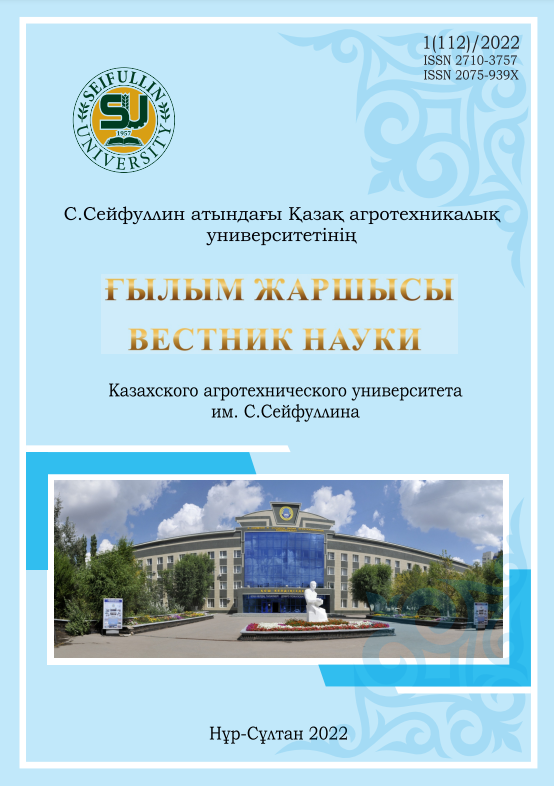DETERMINATION OF COLD RESISTANCE OF MILLET COLLECTION GENOTYPES BY THE LABORATORY METHOD
DOI:
https://doi.org/10.51452/kazatu.2022.1(112).913Keywords:
millet; germplasm; genotype; cold resistance; screening; ontogeny; sum of biological temperatures.Abstract
On the basis of the Kazakh Agrotechnical University named after S.Seifullin in laboratory conditions, an analysis was made of the effect of low temperatures on the laboratory germination of samples of the working collection of proso millet. As a result of the study of resistance to low temperatures, a different reaction of the studied genotypes for this trait was observed. In this way, at a positive low temperature of +100C, two genotypes were distinguished, and at +50C, the highest rates were 4 genotypes from the VIR collection, 1 sample of the USDA collection and 3 domestic sorts. In the course of studying the effect of temperature cold stress on the length of seedlings, it was revealed that in experimental variants this indicator was 0.25 cm on average at +10 0C, and with more intense cold stress + 50C it decreases to 0.19 cm, while the average the length of the seedlings in the control variant at 250C was 5.59 cm. The initial assessment of cold resistance by the laboratory method, in particular, in the cold treatment mode of millet seedlings, made it possible to select the most valuable varieties and samples for breeding purposes.

